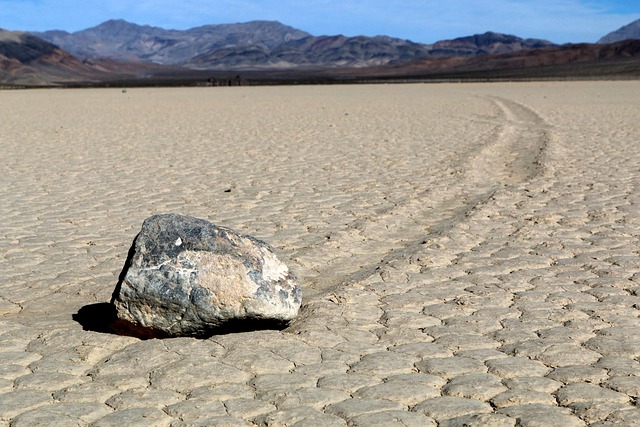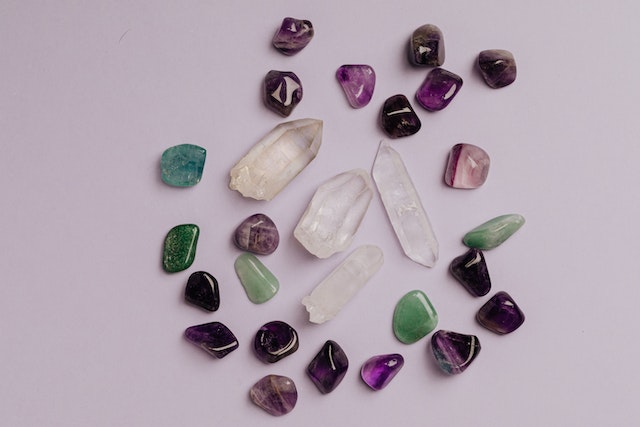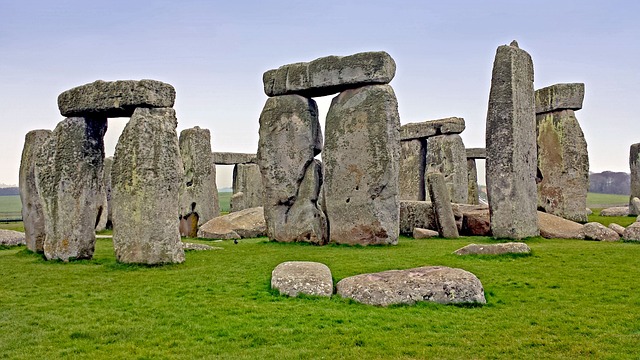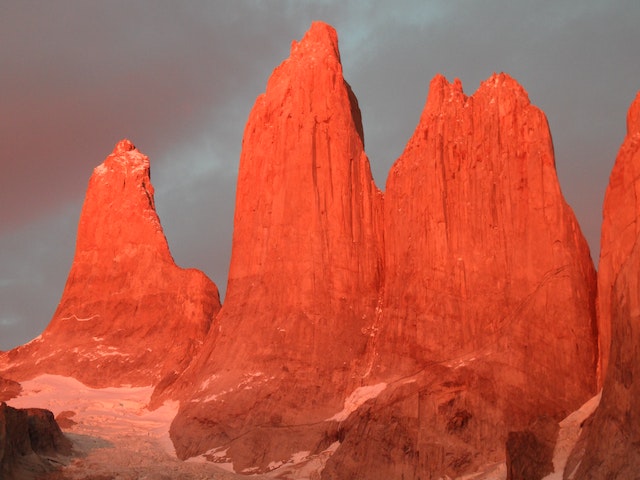
Rocking the World: Insights on Interesting Facts About Rock
Facts About Rock
From the earth’s surface under our feet to the iconic tunes of the Rolling Stones, the term “rock” holds various meanings. But have you ever stopped to contemplate the diverse and wondrous world of rocks and how it plays a significant role in everyday life and history? Whether you’re a geology enthusiast or a rock ‘n’ roll aficionado, this article is about to take you on a thrilling journey, exploring interesting facts about rock.
The Foundations of Our Planet: Earth’s Crust and the Rock Cycle
Earth’s Crust: More Than Meets the Eye
Our earth’s crust isn’t just a rigid layer; it’s a dynamic canvas painted with different types of rocks. Formed from various minerals and mineral-like substances. These rocks tell tales of geological activity and the passage of time.
Igneous Rocks: Born when magma cools and solidifies, they can form both on the earth’s surface (extrusive igneous rocks) and beneath it (intrusive igneous rock). A great example would be the black, basaltic rocks found on the ocean floor.
Sedimentary Rocks: These are the storytellers. Formed from organic matter, mineral deposits, or even the breakdown of other rocks, they often come in layers. Clastic sedimentary rocks and chemical sedimentary rocks, formed from mineral deposits like calcium carbonate, offer insights into Earth’s history.
Metamorphic Rocks: When other rocks undergo extreme pressure or high temperatures, they transform. This transformation, both in terms of their internal structure and chemical composition, gives rise to examples of metamorphic rocks like marble.
The Rock Cycle: An Ever-Changing Process
The study of rocks is incomplete without understanding the rock cycle. It’s fascinating how different rocks, through various geological activities, transform into different types of rocks over a long time.
Beyond the Earth: Rocks in Our Daily Lives

Rocks in Everyday Life: More Than Just Stones
The presence and influence of rocks extend well beyond nature and music. Various types of rocks and the minerals they house play a major role in everyday life. Often in ways we might not immediately realize.
Construction and Infrastructure: Many of the buildings and monuments that stand tall today owe their existence to rocks. Calcium carbonate, for instance, is a primary component in cement. Moreover, granite, a type of igneous rock, is a favored choice for countertops owing to its durability and aesthetic appeal.
Health and Nutrition: Certain minerals that originate from rocks are vital for our health. For example, potassium chloride is an essential mineral used in medical treatments. And also as a salt substitute in food.
Art and Jewelry: Precious metals and gems, which are often mined from rocks, have adorned humans for centuries. Think of the glint of gold, the allure of diamonds, or the deep blue hue of sapphires.
Rocks in Popular Culture: From Star Trek to Video Games
The impact of rocks isn’t just limited to practical uses. Pop culture, be it movies, shows, or video games, frequently features rocks and minerals as central elements.
Star Trek’s Dilithium Crystals: In the world of Star Trek, these fictitious crystals, inspired by real-world mineral formations, play a crucial role in the propulsion of starships.
Video Games: From mining in games like Minecraft to geology-based puzzles in others, the use of rock and its different forms add depth and dimension to virtual worlds.
Rock Around the World: Geological Wonders and Facts

Intriguing Geological Phenomena
The earth’s surface is dotted with mesmerizing geological wonders that offer a glimpse into the planet’s tumultuous past and the ever-changing nature of its present.
Zircon Crystals in Western Australia: Known as the oldest rocks, these tiny crystals, found in Western Australia, are approximately 4.4 billion years old. Offering precious insights into Earth’s early history.
The Moving Rocks of Death Valley: In the arid landscape of Death Valley in the United States, rocks seem to move on their own. Leaving trails in the mud. Though scientists believe ice and wind play a role, the phenomenon remains a subject of intrigue.
Deep Oceanic Crust Discoveries: The ocean floor, particularly the oceanic crust, is a treasure trove of geological activity and discoveries. From massive underwater volcanoes to trenches that plunge into the abyss. These regions are as mysterious as they are fascinating.
Did You Know? Rock World Records and More
Delving deeper into fun facts and interesting tidbits, the world of rocks is full of surprises:
The World’s Largest Rock: Located in Western Australia, Mount Augustus stands as the world’s largest rock. Even surpassing the famous Uluru in terms of sheer size.
Guinness World Record for Rock Balancing: Did you know there’s a world record for balancing rocks? A form of ephemeral art, artists, and enthusiasts compete to stack rocks in the most precarious yet stable formations.
Diverse Uses of Rock: From Technology to Fashion

Rock in Technology: Surprisingly Digital
Despite their ancient nature, rocks play a significant role in today’s high-tech world. Let’s consider some of their uses in our digital age:
Silicon and Electronics: One of the most common rocks in the Earth’s crust, Silicon. When refined, becomes the essential component in the microchips that power our computers, smartphones, and countless other devices.
Quartz in Timekeeping: Used in watches and clocks, the consistent frequency at which certain types of quartz vibrate when subjected to electricity helps maintain precise time.
Lithium in Batteries: Found in granites and mineral springs, lithium forms the basis for the rechargeable batteries powering many of our gadgets.
Rock and Fashion: Elegance Set in Stone
Rocks and the minerals they produce have been synonymous with beauty and elegance for millennia. Their influence in the fashion world is noteworthy:
Diamonds: Beyond their famed use in engagement rings, diamonds, which are essentially carbon subjected to extreme pressure and high temperatures, have adorned crowns, necklaces, and more. Their allure remains unmatched, symbolizing luxury and enduring love.
Other Precious Stones: From the deep reds of rubies to the serene blues of sapphires and the green allure of emeralds. These precious stones, which are essentially mineral deposits, have found their way into countless jewelry designs.
Rocks in Folklore, History, and Education

Historical Significance of Rocks
Throughout history, rocks have played various roles, from spiritual to functional:
Stonehenge: This prehistoric monument in England, made up of large rock pillars, remains an architectural and spiritual enigma. While its true purpose is still debated. Many believe it played a role in ancient rituals and served as an astronomical observatory.
Pyramids of Egypt: Built predominantly from limestone, these monumental tombs stand as a testament to the grandeur of ancient Egyptian civilization. And their sophisticated understanding of geometry and architecture.
Rocks in Education: The Teacher’s Stone
The study of rocks, known as geology, isn’t just for professional geologists. A high school teacher might introduce students to the basic types of rocks. Plus, the rock cycle, and mineral deposits, imparting essential knowledge about our planet’s structure and history. Furthermore, Mohs scale, a system used to classify minerals by their hardness, is a staple in many educational curriculums.
The Mysteries and Marvels of Rock Formations

Metamorphic Marvels: The Transformative Power of Earth
One of the fascinating aspects of geology is the way rocks can change over long periods due to pressure and heat. Metamorphic rocks, which are formed from the transformation of existing rock types under these conditions, showcase this:
Examples of Metamorphic Rocks: Some common examples include marble, which originates from limestone, and slate, derived from shale. Their unique characteristics and beauty are often employed in sculpture and construction.
Mohs Scale and Rock Hardness: When discussing metamorphic rocks or any rock type, it’s essential to touch upon the Mohs scale. It’s a measure of mineral hardness. And while diamonds top the list, many metamorphic rocks display considerable hardness. Due to the extreme pressure and temperatures they’ve undergone.
Igneous Intrigue: From Magma to Solid Form
As magma cools, whether within the earth’s crust or on its surface, it solidifies to form igneous rocks. The rate of cooling can have fascinating effects on their structure:
Intrusive vs. Extrusive Igneous Rocks: Rocks like granite are intrusive, meaning they cool slowly within the Earth. Allowing large crystals to form. In contrast, extrusive rocks like basalt cool rapidly on the surface, often leading to a more fine-grained structure.
Unique Structures and Formations: The Giant’s Causeway in Northern Ireland, with its hexagonal pillars of basalt, serves as a great example of the wonder igneous rocks can create.
The Dynamic World of Sedimentary Stories
Sedimentary rocks are essentially time capsules, capturing a record of the Earth’s history over long durations. Formed from particles of older rocks, organic matter, and mineral-like substances. They reveal tales of past climates, life forms, and events:
Types and Their Tales: Clastic sedimentary rocks, formed from fragments of other rocks, tell stories of erosion and deposition. In contrast, chemical sedimentary rocks, like those formed from calcium carbonate, narrate tales of ancient lagoons and seas.
Fossils and Ancient Histories: One of the most exciting things about sedimentary rocks is the potential to find fossils. These preserved remains or traces of animals and plants offer a direct window into the Earth’s ancient life.
Rock ‘n’ Roll: A Legacy Beyond Stones

Pioneers of Rock and Their Stories
The term “rock” also resonates with melodies that have shaped generations. Artists like Jimi Hendrix, with his groundbreaking “Purple Haze,” and the legendary Elvis Presley, have etched their names in rock history. Did you know that “Wild Thing,” a hit song by The Troggs, was penned by Chip Taylor, who happens to be Angelina Jolie’s uncle?
Legends and Their Hits: The Rolling Stones, with Mick Jagger leading the way, gave us classics like “Wild Thing.” Then, there’s Jimmy Page’s “Black Dog,” a tune that remains timeless. From the rebellious vibes of Axl Rose to the soothing melodies of Fleetwood Mac’s “London Calling,” rock has seen diverse expressions.
World Records and Rock: Speaking of interesting facts, did you know that the Guinness World Record for the longest concert by multiple artists is linked to rock music? The event lasted for over 16 days!
The Legends of Rock: From Brian Jones to Eric Clapton
Moving back to the world of music, the legacy of rock ‘n’ roll is dotted with legends whose contributions transcended mere tunes.
Brian Jones: A founding member of the Rolling Stones, Jones’ multi-instrumental talents played a pivotal role in defining the band’s eclectic sound in its early days.
Eric Clapton’s “Good Morning America”: Beyond his legendary guitar skills, Clapton’s music, like the hit “Good Morning America,” reflected the times they were made in, offering commentary, solace, and sometimes, rebellion.
Rocks, in every sense of the word, have shaped our world, culture, and history. Their intriguing tales, both geological and musical, continue to inspire, amaze, and educate. Whether it’s the solid rock beneath our feet or the soft rock melodies that touch our souls, their presence is undeniable and everlasting.
Rock Music: An Unending Evolution
The New Wave of Rock Stars
While legends like Buddy Holly, Jimmy Page, and Jimi Hendrix set the stage, the rock genre continues to evolve:
Modern Legends: Artists like Lynyrd Skynyrd, known for hits like “Sweet Home Alabama,” and newer bands releasing fresh albums ensure the rock genre remains alive and kicking.
Rock’s Influence on Other Genres: The likes of Axl Rose and Fleetwood Mac have inspired countless artists across various genres. Their songs, like the iconic “London Calling,” have been covered and reimagined in multiple musical styles.
Rock and Roll Facts: Trivia for the Avid Fan
With such a rich history, the world of rock and roll is filled with intriguing tidbits:
Keith Moon’s Food Fight: The drummer of The Who, Keith Moon, was notorious for his wild antics, including a legendary food fight in a hotel that caused thousands in damages.
Bob Dylan’s Nobel Prize: While many rock stars have won Grammys, Bob Dylan stands out for being awarded the Nobel Prize in Literature, a testament to his profound songwriting skills.
In both its natural and musical forms, rock has been an integral part of human culture and civilization. It has shaped landscapes, powered revolutions, served as tools, and provided a beat to which generations have danced. As we explore the myriad facets of rock, it becomes evident that its influence, whether etched in stone or grooves of vinyl, is here to stay.
Rock ‘n’ Roll Evolution: From Chuck Berry to The Clash
Switching gears back to the musical dimension of rocks, the landscape of rock music has been continuously evolving since its inception:
Founding Fathers: Artists like Chuck Berry, with hits like “Roll Over Beethoven,” laid the groundwork for what rock music would become, infusing it with rhythm and vigor.
Expanding Horizons: As rock progressed, artists like The Clash, with anthems like “London Calling,” expanded its boundaries, infusing it with punk energy and political commentary.
Fun Trivia: Did You Know?
Angelina Jolie’s Rock Connection: Not many are aware that Angelina Jolie’s uncle, Chip Taylor, wrote the classic rock hit “Wild Thing.”
From Rock to Guinness: As strange as it sounds, the classic rock song “Purple Haze” by Jimi Hendrix was mistakenly printed as “Purple Hare” in some copies, making it a quirky collector’s item!
Facts About Rock 5 Frequently Asked Questions

What are the main types of rocks found in the earth’s crust?
The earth’s crust primarily consists of three main types of rocks:
Igneous Rocks: Formed from the solidification of molten magma or lava. Examples include granite and basalt.
Sedimentary Rocks: Formed from the accumulation and compaction of sediments over time. Examples include limestone and sandstone.
Metamorphic Rocks: Formed when existing rocks undergo changes due to heat, pressure, or chemical reactions. Examples include marble and schist.
How do different minerals influence the type of rock formed?
Different minerals have distinct physical and chemical properties. The presence and proportion of these minerals determine the texture, color, hardness, and other characteristics of the rock. For instance, granite is composed mainly of quartz, feldspar, and mica. The type and amount of minerals present also influence the rock’s resistance to weathering and erosion.
Why is rock music often associated with rebellion?
Rock music emerged in the mid-20th century as a form of countercultural expression. Its loud, energetic sound and often provocative lyrics challenged societal norms and conventions. Rock music became a symbol of youth rebellion against the establishment, representing freedom, individualism, and defiance. The association with rebellion is also due to the genre’s roots in blues and its connection to themes of struggle and resistance.
How have artists like Jimi Hendrix and Elvis Presley influenced modern music?
Jimi Hendrix: Known for his revolutionary guitar techniques and psychedelic sound, Hendrix expanded the possibilities of what the electric guitar could achieve. He influenced countless guitarists and introduced new ways of thinking about music, blending genres like rock, blues, and jazz.
Elvis Presley: Often referred to as the “King of Rock and Roll,” Elvis brought rockabilly, a fusion of country and rhythm & blues, to the mainstream. His charismatic performances, unique voice, and ability to blend various musical styles paved the way for future rock artists and left an indelible mark on popular music.
What’s the significance of the rock cycle in understanding the earth’s surface?
The rock cycle is a continuous process by which rocks are formed, altered, destroyed, and reformed. It illustrates the relationships between the three main types of rocks (igneous, sedimentary, and metamorphic) and how they transform over time due to various earth processes. Understanding the rock cycle provides insights into the dynamic nature of the earth’s surface, the history of the planet, and the forces that have shaped and continue to shape the landscape. It also helps geologists predict the distribution of valuable mineral resources.
In conclusion, whether we’re discussing the robust igneous formations or the rhythmic beats of an Elvis Presley track, “rock” in all its interpretations has a profound and lasting impact on our world. Be it through the sheer might of geological processes or the cultural revolutions sparked by rock ‘n’ roll, these formations and soundwaves have truly shaped the world we inhabit.





2 Comments
Pingback:
Pingback: